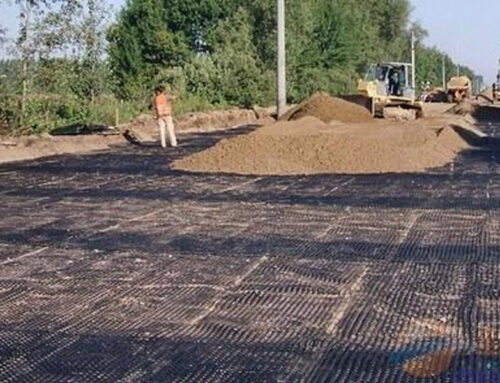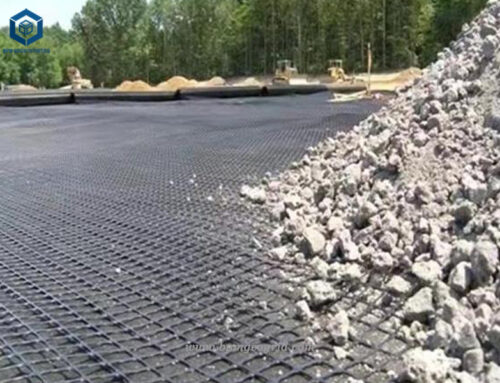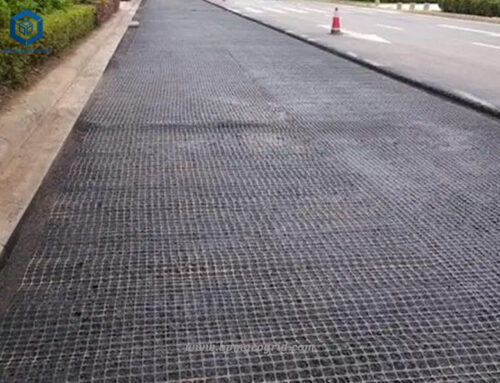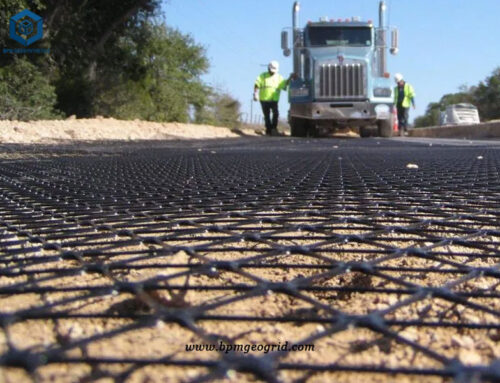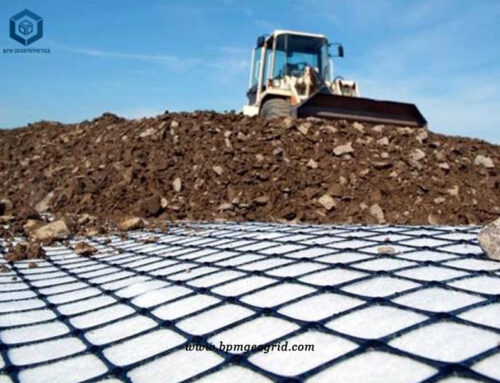More than 90% of Russia’s land area belongs to the cold temperate zone. The long winter and cold weather conditions make Russian roads extremely prone to cracks. Road crack maintenance accounts for as much as 80% of road maintenance costs. There are two reasons for transverse cracks in cold areas. Affected by temperature, the temperature in cold areas is lower in winter, and the temperature stress generated in the asphalt surface or semi-rigid base layer is greater than its ultimate tensile strength under the condition of low temperature or sudden temperature drop resulting in cracks. In addition, due to the large temperature difference between day and night in cold areas, as the surface temperature of the asphalt surface changes greatly, the surface of the asphalt surface produces a large temperature shrinkage stress. Under the repeated action of the temperature stress, the asphalt surface begins to produce temperature fatigue Cracks and long-term heavy-duty traffic on cracked highways will inevitably lead to the appearance of massive cracks. In addition, the freezing and thawing during the snow melting period aggravates the damage of the road surface. In order to reduce the strength and service life of Russian road pavement, Russian customers purchased fiberglass geogrid for roads through BPM, and it is recommended that customers use 100KN/00KN.
Russian roads are generally asphalt roads. A glassfiber geogrid for roads construction is laid between the asphalt surface layer and the CIMC asphalt mixture layer or the coarse asphalt mixture layer to eliminate or slow down the reflection cracks on the surface layer. Thereby extending the service life of the road and reducing maintenance costs. The temperature of asphalt pavement is as high as 160℃-180℃. The use of ordinary plastic geogrid is prone to wrinkles, deformation and softening, which greatly reduces its performance. It is not only difficult to eliminate or slow down the reflection cracks on the surface, but also makes the asphalt The road surface is more uneven, and the unique performance of the fiberglass geogrid fully meets the construction needs of Russian customers.
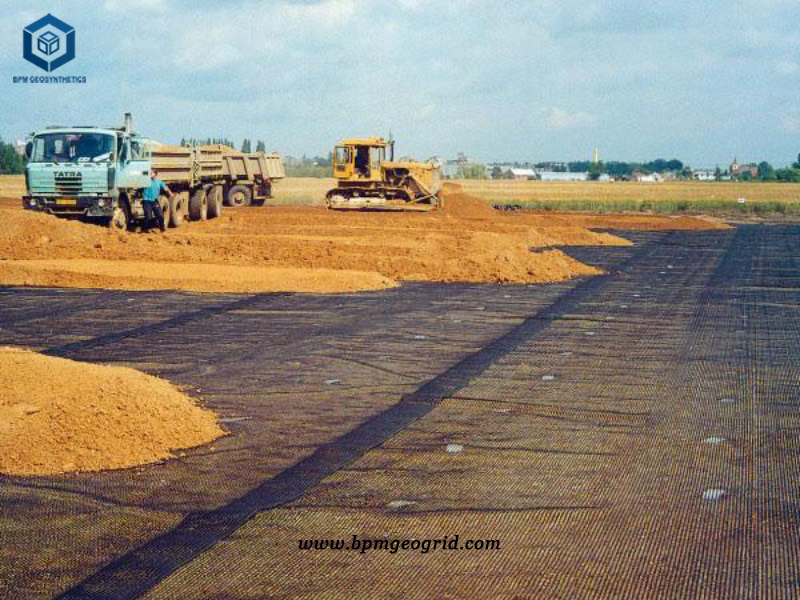
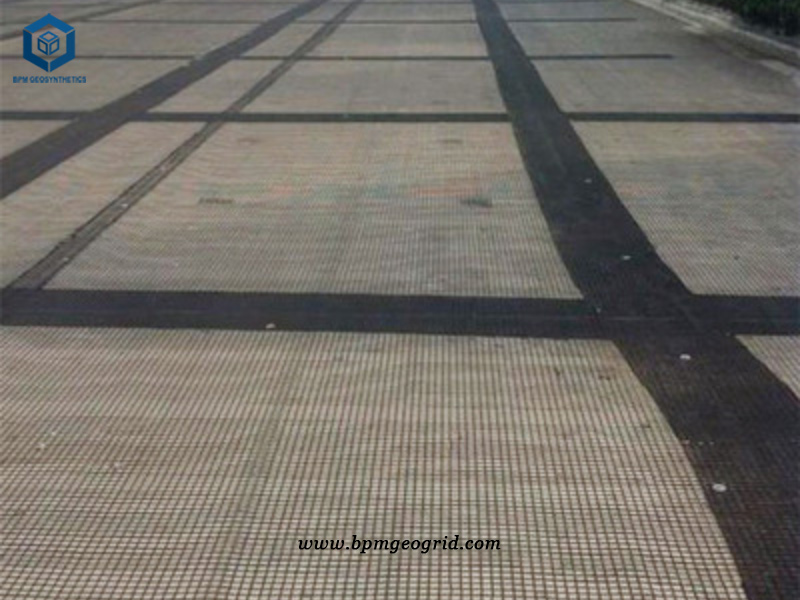
When the fiberglass geogrid is applied to asphalt roads, it can play a role in the following aspects.
(1) Anti-fatigue cracking
The asphalt pavement must have a certain load-bearing capacity, and no fatigue damage can occur within the specified time. Asphalt pavement is under pressure on the lower layer directly in contact with the wheel, and the surface layer is under tension in the area beyond the edge of the wheel load. Because the two stressed areas have different force properties and are close to each other, the two areas are subjected to tension. The junction of the force area, that is, the sudden change of the force, breaks down, and fatigue cracking occurs under the action of long-term load.
The glass fiber geogrid in the asphalt surface layer can disperse the above-mentioned compressive and tensile stresses, forming a buffer zone between the two stressed areas, reducing the damage to the asphalt surface layer caused by sudden stress changes. At the same time, the low elongation of the glass fiber geogrid reduces the deflection of the road surface and ensures that the road surface will not be excessively deformed.
(2) High-temperature rutting asphalt concrete has rheological properties at high temperatures. Under the action of vehicle load, the stressed area will dent. After the vehicle load is removed, the asphalt surface cannot be completely restored to its original state, that is, plastic deformation occurs. Under the action of rolling, plastic deformation accumulates continuously, forming a rut. Through the analysis of the asphalt surface structure, it can be seen that the asphalt concrete under high temperature is compacted by the load, forming a small amount of wave rheology, and there is no skeleton material in the surface layer that can restrain the rheology of the asphalt concrete, resulting in the rheology of the asphalt surface layer. The cumulative superposition of this is the root cause of rutting. The glass fiber geogrid is used in the asphalt surface layer, which acts as a skeleton in the asphalt surface layer. The aggregate in the asphalt concrete penetrates between the grids to form a composite mechanical interlocking system to limit the movement of the aggregate and increase the asphalt surface. The lateral restraint force in the layer, the various parts of the asphalt surface layer restrain each other, prevent the asphalt surface layer from moving, thereby playing the role of resisting rutting.
(3) Resistance to low-temperature shrinkage cracking During severe cold, the temperature of the asphalt concrete surface layer is close to the air temperature, and the asphalt concrete shrinks in cold, resulting in tensile stress. Under repeated loads, the tensile stress further increases. When the tensile stress exceeds the tensile stress of the asphalt concrete At the time of strength, cracks are generated. At both ends of the cracks, the tensile stress is more concentrated, and the cracks gradually form cracks, causing diseases. The glass fiber geogrid is placed in the asphalt, so that the tensile strength of the asphalt concrete is greatly improved, and it is enough to resist the larger tensile stress without causing road damage. Even if there are small cracks in the local area, the stress at the crack is concentrated. The transmission of the fiber geogrid disappears, and the crack will not develop into a crack.
(4) Delay reflection of reflection cracks There are two types of reflections caused by cracks. One is that after cracks in the surface layer, the cracks reflect downwards, destroy the underlying structure, and reduce the strength of the pavement structure. In the rainy season, water enters the cracks, and the traffic load ( The tire pressure) repeatedly resists pressure, the water generates water pressure in the cracks, and the water continuously impacts the asphalt mixture, causing the cracks to expand. The other is the original cracks in the old surface, and the cracks in the subgrade or the lower subgrade reflect upward. The new pavement cannot withstand the shearing force and tensile stress generated by the movement of the bottom layer, resulting in cracks in the pavement surface. Add a glassfiber geogrid for roads interlayer in the asphalt overlay to restrain stress, release strain, enhance the overall strength of asphalt concrete, and achieve the purpose of preventing cracks from reflecting upward or downward.
BPM glassfiber geogrid for roads is a kind of flat network shape selection excellent reinforced alkali-free glass fiber yarn. Adopt foreign advanced warp knitting machine and warp knitting directional structure to weave into substrate. It makes full use of the yarn strength in the textile, improves its chemical properties, makes it have good tensile, tear and creep resistance, and is formed by an excellent modified asphalt coating. It follows the principle of similarity and compatibility, emphasizes its synthetic properties with asphalt mixtures, fully protects the glass fiber substrate, improves the wear resistance and shear resistance of the substrate, strengthens the pavement, and prevents road cracks and other hazards.
Application of Glassfiber Geogrid for Roads Construction
- The fiberglass geogrid is widely used in asphalt pavement reinforcement, soil stabilization and embankment reinforcement.
- It can be used as a secondary reinforced geogrid.
- The fiberglass geogrid is widely used in the reinforcement of soft soils, segmented retaining walls, slopes and roadbeds.
- The fiberglass geogrid can commonly used in subway, railway and highway construction.
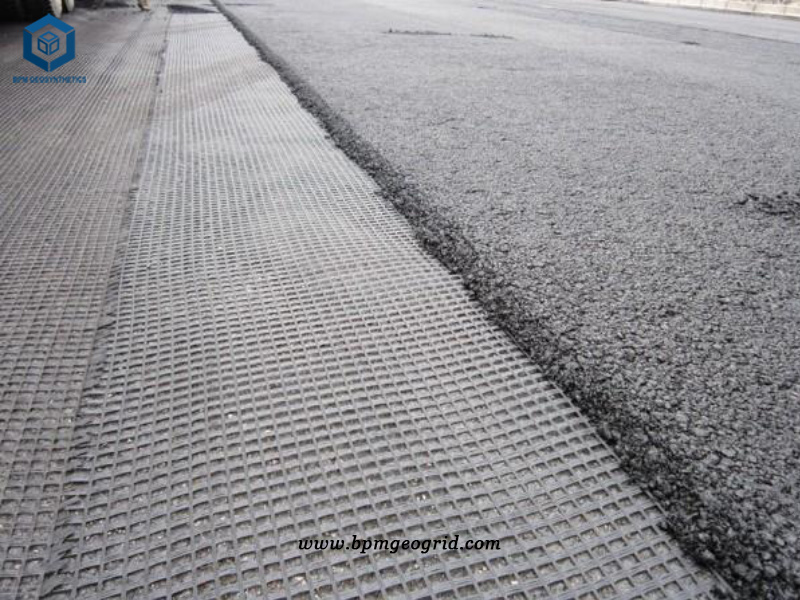
About BPM
BPM manufactures and supplies many types of effective and state of the art geogrid, geomembrane, geotextile, and geosynthetics to over 36 countries. Our main innovative, high quality geogrid products include plastic biaxial geogrid, fiberglass geogrid, plastic uniaxial geogrid, warp knitting polyester geogrid, and steel plastic georgic mesh, etc. BPM brand brand high quality geosynthetic products had been certificated by the ISO9001, ISO14001,OHSAS18001 Soncap, SASO and BV, SGS and Intertek, etc.
If you have any questions or inquiries, please fill in and submit the form to contact us.

